Abstract
Passive K+ transport in human erythrocytes (defined as ouabain-insensitive transport) was inhibited 70% by replacement of Cl- by several permeant monovalent anions. The Vmax of Cl--dependent K+ influx was 1.14 mmol . liter-1, hr-1; its apparent Km for K+ was 4.7 mM. There was a much smaller component of Na+ influx dependent on Cl- (Vmax, 0.23 mmol . liter-1 . hr-1). Furosemide and other inhibitors of Cl- transport inhibited passive K+ transport to the same extent as replacement of Cl-, but 4-acetamido-4'-isothiocyanostilbene-2,2'-disulfonic acid, a specific inhibitor of anion exchange in erythrocytes, was ineffective. The Cl--dependent K+ transport, which may be K+/Cl- cotransport, could reflect a mechanism for regulating cell volume.
Full text
PDF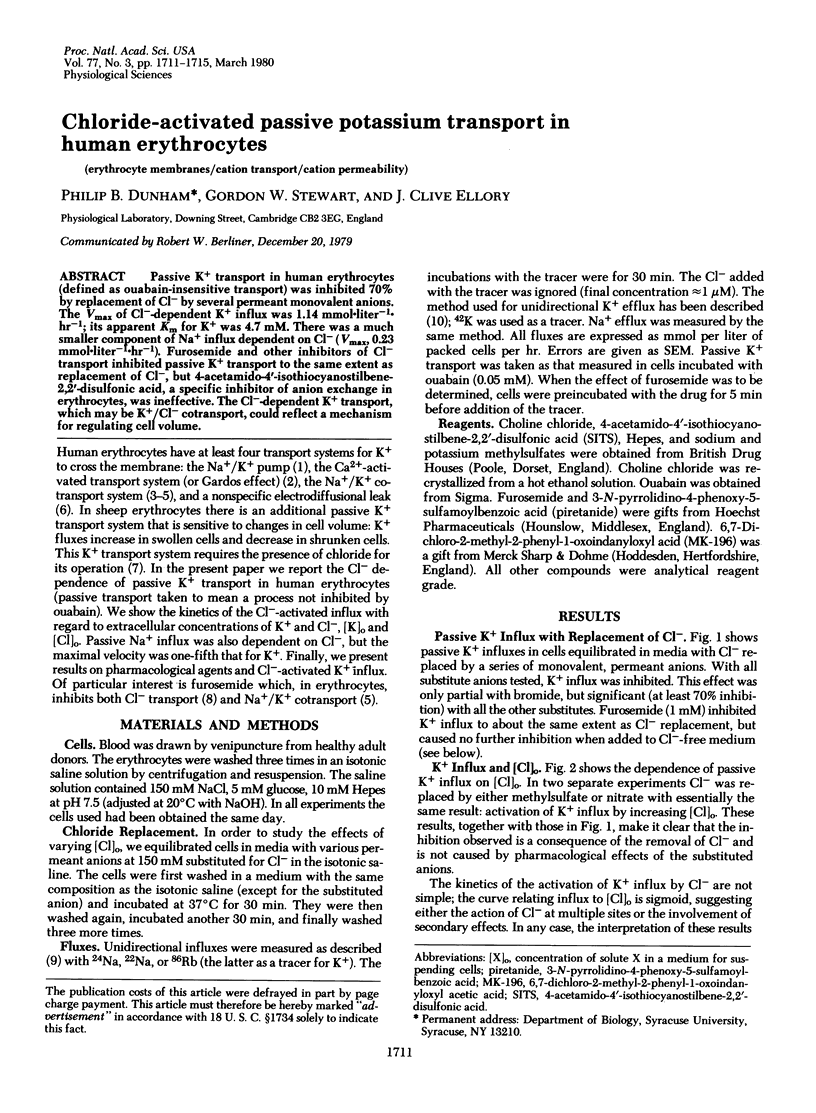
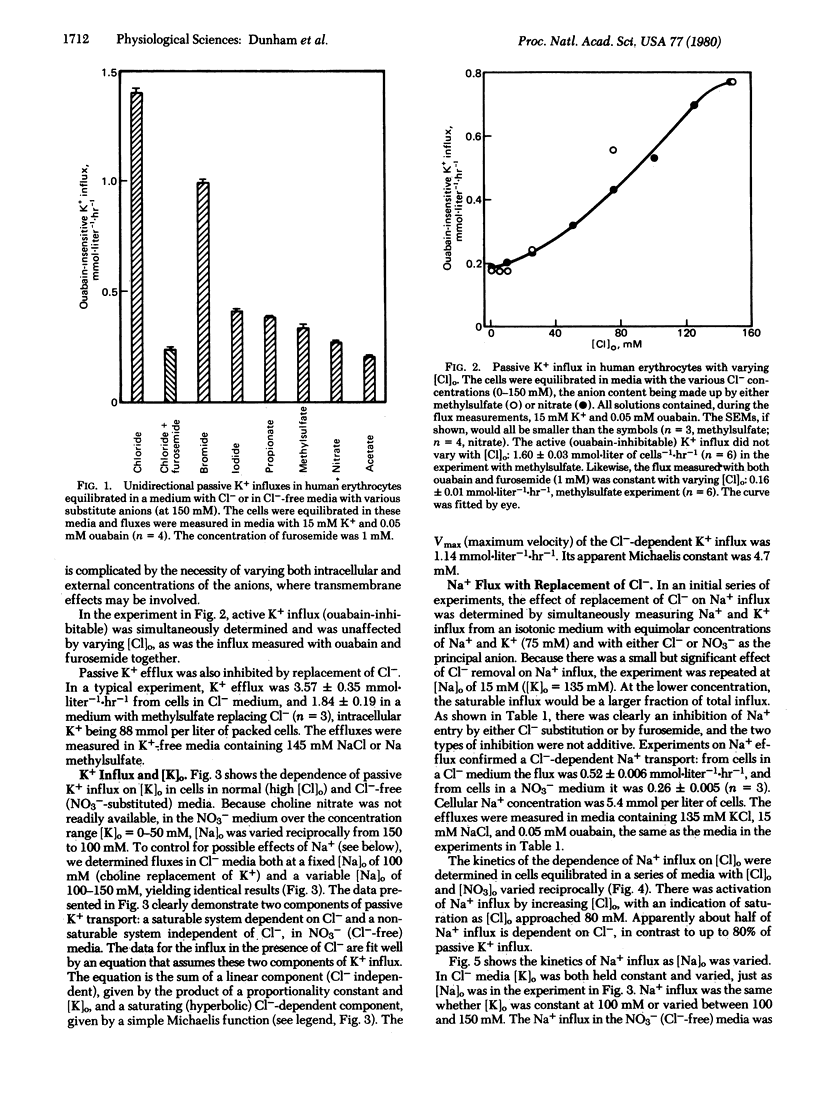
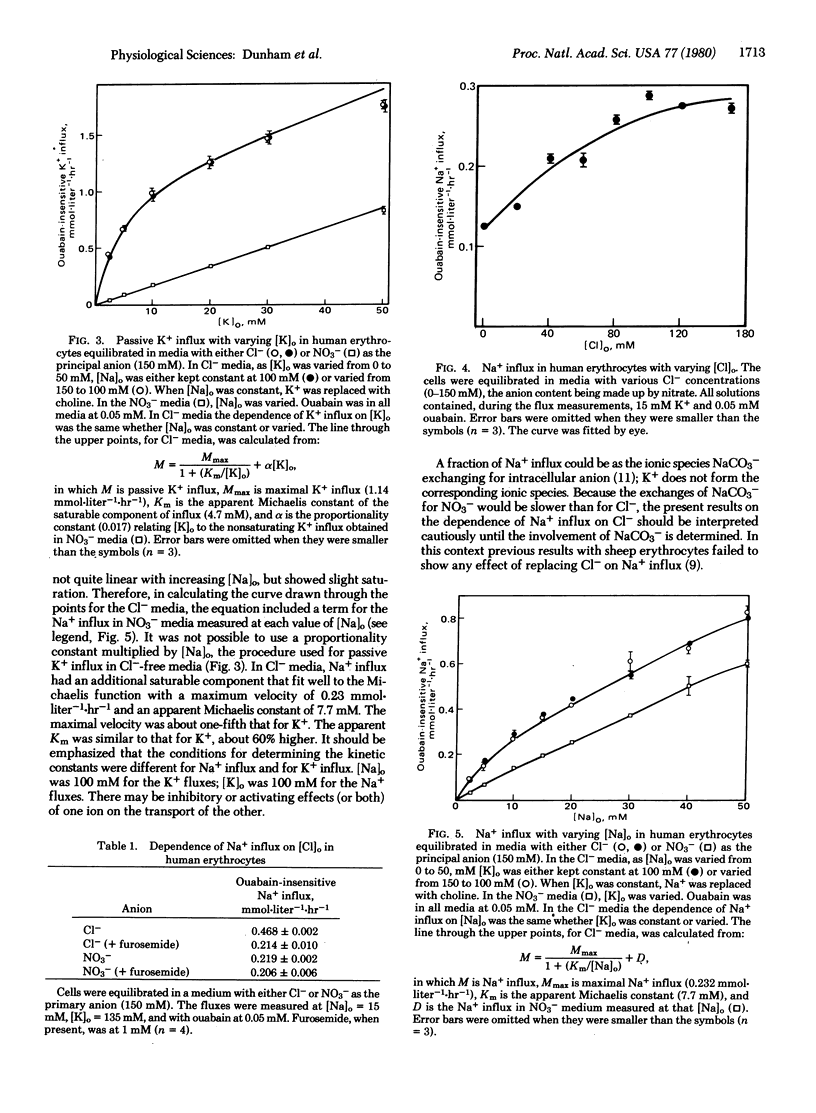
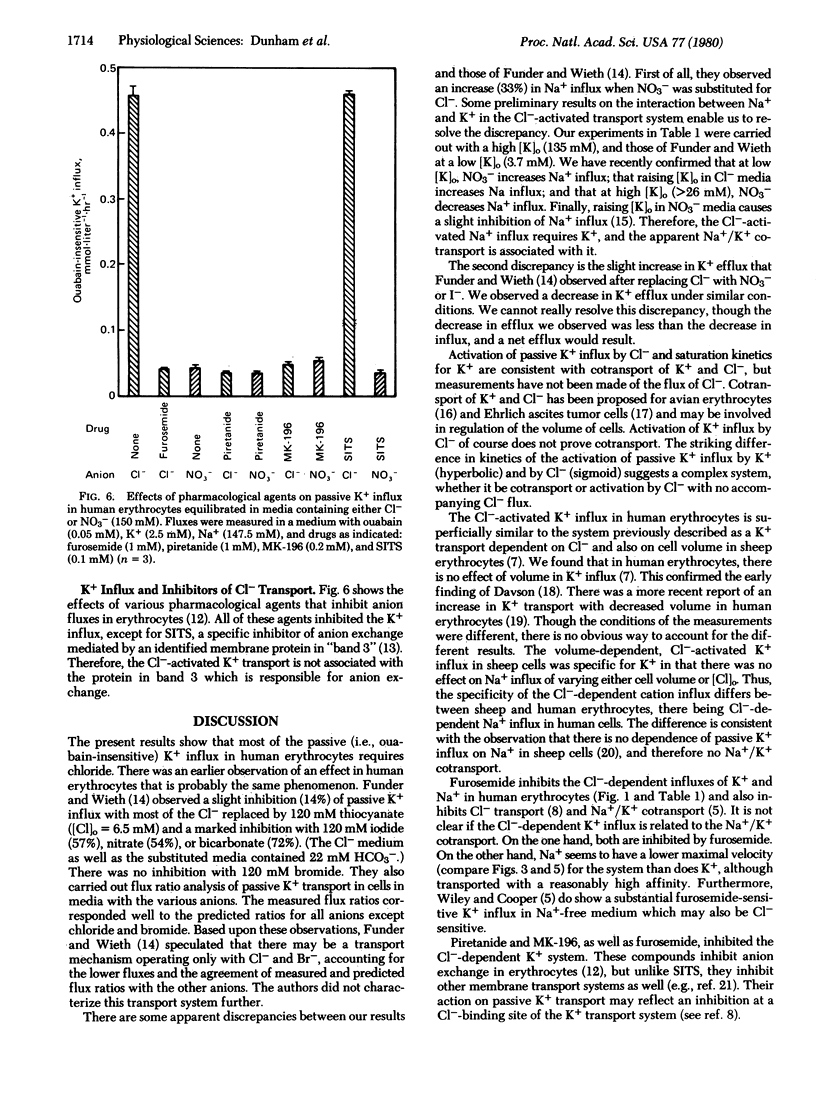
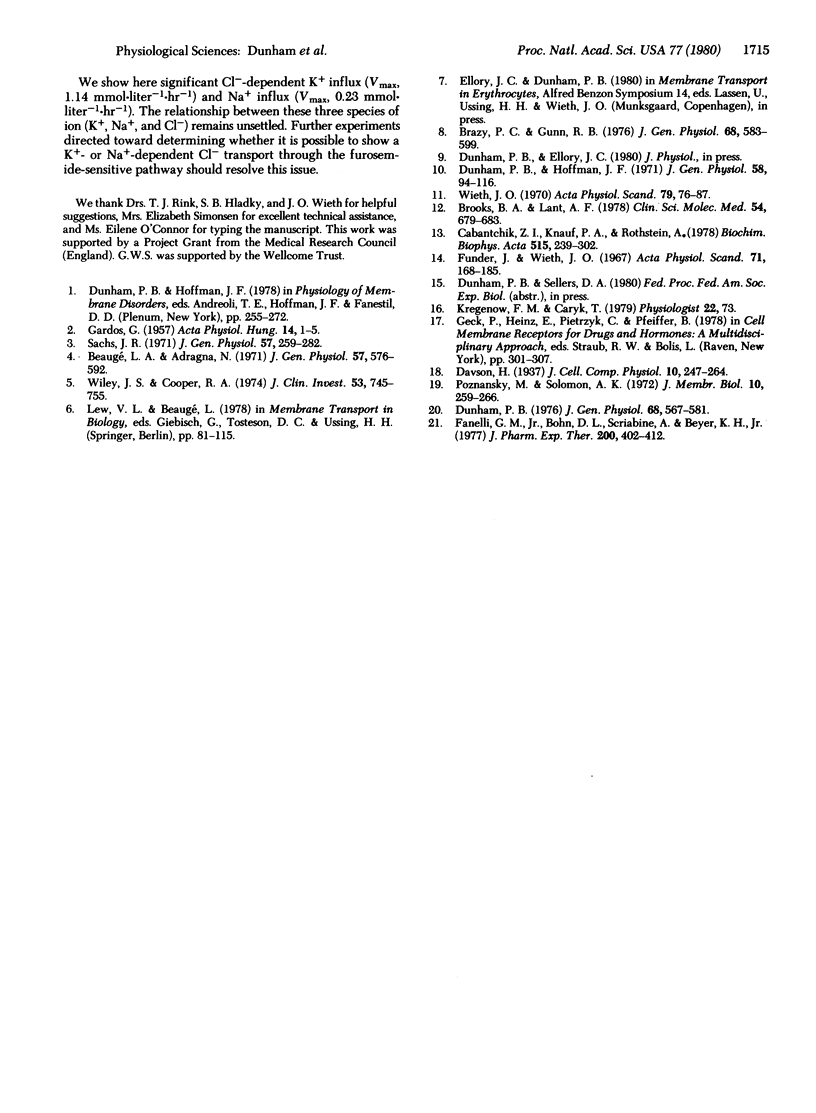
Selected References
These references are in PubMed. This may not be the complete list of references from this article.
- Beauge L. A., Adragna N. The kinetics of ouabain inhibition and the partition of rubidium influx in human red blood cells. J Gen Physiol. 1971 May;57(5):576–592. doi: 10.1085/jgp.57.5.576. [DOI] [PMC free article] [PubMed] [Google Scholar]
- Brazy P. C., Gunn R. B. Furosemide inhibition of chloride transport in human red blood cells. J Gen Physiol. 1976 Dec;68(6):583–599. doi: 10.1085/jgp.68.6.583. [DOI] [PMC free article] [PubMed] [Google Scholar]
- Brooks B. A., Lant A. F. The use of the human erythrocyte as a model for studying the action of diuretics on sodium and chloride transport. Clin Sci Mol Med. 1978 Jun;54(6):679–683. doi: 10.1042/cs0540679. [DOI] [PubMed] [Google Scholar]
- Cabantchik Z. I., Knauf P. A., Rothstein A. The anion transport system of the red blood cell. The role of membrane protein evaluated by the use of 'probes'. Biochim Biophys Acta. 1978 Sep 29;515(3):239–302. doi: 10.1016/0304-4157(78)90016-3. [DOI] [PubMed] [Google Scholar]
- Dunham P. B., Hoffman J. F. Active cation transport and ouabain binding in high potassium and low potassium red blood cells of sheep. J Gen Physiol. 1971 Jul;58(1):94–116. doi: 10.1085/jgp.58.1.94. [DOI] [PMC free article] [PubMed] [Google Scholar]
- Dunham P. B. Passive potassium transport in LK sheep red cells. Effects of anti-L antibody and intracellular potassium. J Gen Physiol. 1976 Dec;68(6):567–581. doi: 10.1085/jgp.68.6.567. [DOI] [PMC free article] [PubMed] [Google Scholar]
- Fanelli G. M., Jr, Bohn D. L., Scriabine A., Beyer K. H., Jr Saluretic and uricosuric effects of (6, 7-dichloro-2-methyl=1-oxo-2-phenyl-5-indanyloxy) acetic acid (MK-196) in the chimpanzee. J Pharmacol Exp Ther. 1977 Feb;200(2):402–412. [PubMed] [Google Scholar]
- Funder J., Wieth J. O. Effects of some monovalent anions on fluxes of Na and K, and on glucose metabolism of ouabain treated human red cells. Acta Physiol Scand. 1967 Oct-Nov;71(2):168–185. doi: 10.1111/j.1748-1716.1967.tb03723.x. [DOI] [PubMed] [Google Scholar]
- GARDOS G. Effect of ethylenediaminetetraacetate on the permeability of human erythrocytes. Acta Physiol Acad Sci Hung. 1958;14(1):1–5. [PubMed] [Google Scholar]
- Poznansky M., Solomon A. K. Regulation of human red cell volume by linked cation fluxes. J Membr Biol. 1972 Dec 29;10(3):259–266. doi: 10.1007/BF01867859. [DOI] [PubMed] [Google Scholar]
- Sachs J. R. Ouabain-insensitive sodium movements in the human red blood cell. J Gen Physiol. 1971 Mar;57(3):259–282. doi: 10.1085/jgp.57.3.259. [DOI] [PMC free article] [PubMed] [Google Scholar]
- Wieth J. O. Effects of monovalent cations on sodium permeability of human red cells. Acta Physiol Scand. 1970 May;79(1):76–87. doi: 10.1111/j.1748-1716.1970.tb04703.x. [DOI] [PubMed] [Google Scholar]
- Wiley J. S., Cooper R. A. A furosemide-sensitive cotransport of sodium plus potassium in the human red cell. J Clin Invest. 1974 Mar;53(3):745–755. doi: 10.1172/JCI107613. [DOI] [PMC free article] [PubMed] [Google Scholar]


